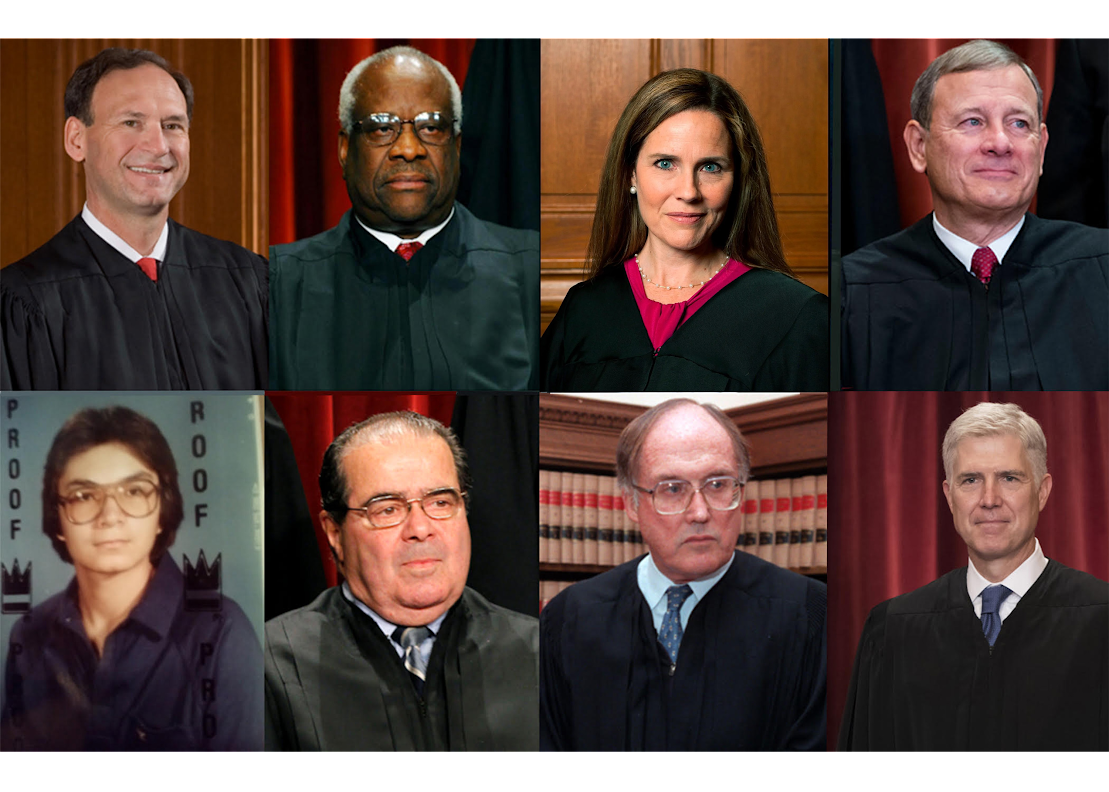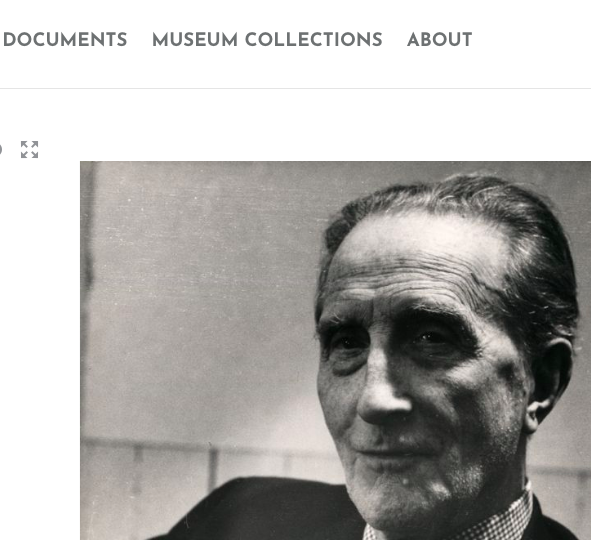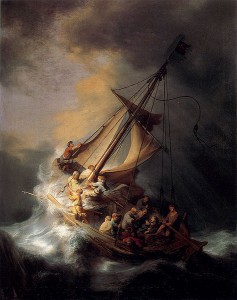Pablo Wendel, an art student at the Royal College of Art, has caused another uproar with his recent thesis installation. Security at the RCA allege that Wendel’s installation, a makeshift stairway linked to a fire escape at the back of the RCA Sculpture Department, obstructed a driveway and created a safety hazard. Wendel previously made headlines around the world when he dressed up as a Terracotta Warrior and leapt into the display pit with the 2,200 year-old sculptures in China in 2006. Via The Telegraph.
Will textualism save our copyright planet? Warhol Fdn v. Lynn Goldsmith headed to SCOTUS
Images of Goldsmith and Warhol at issue. The U.S. Supreme Court will review a ruling that an Andy Warhol print infringed a copyrighted photograph taken by photographer, Lynn Goldsmith, of the late musician, Prince. We certainly hope--as much as one can hope for anything these days--that SCOTUS cleans up the wasteland that has become of "fair use" interpretation. One would think, and hope I suppose, that with many of the sitting justices adhering to textualism, they will fully jettison the nonsensical "transformativeness" test that has plagued us like a really bad case of Covid since the mid-1990s. Docs here, via ...


Podcast: Stephanie Drawdy and Sergio Munoz Sarmiento on All Things Art and Law
Ahh...Youth! Sergio Munoz Sarmiento. (2015 - ongoing), C-Print. © and TM Sergio Muñoz Sarmiento. All rights reserved. I had a lovely conversation with fellow lawyer and artist, Stephanie Drawdy, on the NFT craze, pets, art law, and the origins of The Art & Law Program. You can listen to the Podcast here. Hope you enjoy!


Marcel Duchamp archives now online, free of charge
The Philadelphia Museum of Art, the Centre Pompidou, and the Association Marcel Duchamp have digitized their vast archives of material on the Dadaist and placed it online, where it is free to all. Enjoy!


The Art & Law Coloring Book
If you have kids at home and want them to do something fun and educational, try the Art & Law Coloring Book, an ongoing project by The Art & Law Program. Really a great collection of drawings by great artists, including: Emma Jane Bloomfield Damien Davis Molly Dilworth João Enxuto Soda Jerk Clare Kambhu Alexandra Lerman Erica Love Douglas Melini Sergio Muñoz Sarmiento Melinda Shades Elisabeth Smolarz Gabriel Sosa Alfred Steiner Valerie Suter Happy coloring!


What are NFTs and what does it mean to own one?
If you're confused as to what the hell NFTs are, particularly art NFTs, here's a new article by Alfred Steiner that pretty much walks you through and safely out of the NFT hell. In his article, Steiner explains what NFTs are and what it means to own one. He also discusses why that meaning of ownership—which may appear novel to many—isn’t new at all when considered against the backdrop of the market for conceptual art. Steiner concludes with some observations about how NFTs may be good and bad for the art industry.


Two artists have filed a free-speech lawsuit against New York City in response to new regulations capping the number of art vendors allowed in Manhattan parks.
Italian police recovered stolen artworks, including paintings by Lucio Fontana, George Grosz, Giorgio de Chirico and Wassily Kandinsky, in an overnight raid on a country house northwest of Rome.
Quiet week overall, but some good stuff on copyright.
Michael Cohen, of the Trademark Blog, has a great synopsis of the recent 9th Circuit decision regarding the registration requirement for copyright infringement lawsuits.
Alina Ng, of the Mississippi College of Law, has written a journal article on property rights and copyright. “Exclusionary property rights in creative works, arise, if at all, to protect an author’s creative integrity, validate the importance of authentic authorship, and provide personal and moral incentives for authors to produce creative works of social value.”
Ray Dowd, in his fair use Friday entry, writes about injunctions and fair use: “The Digital Millenium Copyright Act makes it a crime to circumvent encryption to rip someone else’s copyrighted materials. So isn’t that criminal statute an impermissible prior restraint on free speech?”
Pamela Chestek has a great copyright and employment law read, teasing out a recent case between an independent contractor and a real estate agency that hired the IC. The fight was over photographs of properties for sale taken by the IC while he was working for the real estate agency. Who won? Read it here.
Last but not least, Jonathan Bailey gives us eleven free copyright protections for artists and photographers. It’s a good and quick read.
Darth Vader, Thomas the Tank Engine, Tigger and Shrek, were among the piñata characters confiscated by Mexican police. In classic “free culture” ideology, a Mexican vendor stated his view point on fair use:
“A piñata is Mexican,” said Eduardo Bejaramo, a vendor who had been detained in the raid. “It’s just newspaper with paint on it. We’re not copying music or films. We’re doing all this by hand. How can we copy if Marvel does not make piñatas?”
Seems Bejaramo has taken one too many piñata beatings. Via The New York Times.
Upcoming at Volunteer Lawyers for the Arts. CLE available for admitted New York attorneys.
Theft, Fraud, and Forgery: Cultural Property Crime in the U.S. and the FBI Art Theft Program
When: Thursday, July 22nd, 2010, 2:00 – 5:00 pm
Where: Wachtell, Lipton, Rosen & Katz, 51 West 52nd Street, New York, New York 10019
Description:
Art crime is a multi-billion dollar endeavor that affects collectors, dealers, galleries, museums and artists world-wide. The FBI has investigated these crimes for many years, and five years ago established the Art Crime Team to develop a cadre of Special Agents trained specifically in art crime investigations. Although spectacular thefts from major museums capture the headlines, most art thefts in the U.S. are residential burglaries and art fraud is even more rampant. This talk will cover federal jurisdiction, elements of the U.S. criminal statutes, international treaties and conventions, as well as case studies of recent investigations. Basic strategies for protection of collections will also be covered.
Lecturer:
Bonnie Magness-Gardiner is Manager of the Art Theft Program at the Federal Bureau of Investigation. Headquartered in Washington, D.C., the Art Theft Program was established after the looting of the Baghdad Museum in 2004. Dr. Magness-Gardiner coordinates the work of 13 special agents assigned to various geographic regions, and manages the National Stolen Art File. She received her Ph.D. in Near Eastern Archaeology from the University of Arizona. After teaching archaeology for five years, she entered government service as program manager for the Archaeology Program at the National Endowment for the Humanities then became a program manager for the American Memory Project at the Library of Congress. For eight years she was the Senior Cultural Property Analyst for the Department of State, implementing the 1970 UNESCO Convention against illicit traffic in cultural property. She also served as the program manager for cultural heritage restoration projects in Iraq. She has been with the FBI since 2005.
Moderated by: Sergio Muñoz Sarmiento, Esq.
Registration Fees:
VLA Member Attorney or Arts Professional: $200
Non-Member Attorney or Arts Professional: $250
Attendees must register before July 20th and be on the security list to attend. (There is an additional $25 fee if you register after July 15th.)
*3.0 CLE credits, 1 Professional Practice, 1 Skills and 1 Ethics (Approved for Non-Transitional and Transitional Attorneys)
To register and for more information, please see this registration form, or call 212.319.2787 x1. For more information please contact VLA’s Associate Director, Sergio Muñoz Sarmiento, Esq. at 212.319.2787 x13, or via e-mail at ssarmiento@vlany.org.
This event is organized and sponsored by Volunteer Lawyers for the Arts. VLA would like to thank Wachtell, Lipton, Rosen & Katz for hosting this program.
I meant to post on this last Friday, but with the World Cup getting underway (Mexico vs. South Africa to boot), this post was relegated to the Sunday stack.
Anyhow, Ray Dowd, copyright litigator from NYC, posts a good art law question via his Fair Use Friday column, pondering whether artist Vik Muniz’s version of Warhol’s Double Mona Lisa, from 1963, is fair use under copyright law. Muniz’s version, composed of peanut butter and jelly, basically takes Warhol’s composition of the Mona Lisa. Ray wonders:
Is the borrowing of Warhol’s name and arrangement of a PD work ok? Does the selection of peanut butter and jelly drive the transformative nature of the work? And would the answer change if Warhol’s work were an entirely original composition NOT based on a public domain work? And does the number of copies matter?
I’m not sure how much copyright play Warhol would have based solely on the composition, or if Muniz’s version is transformative enough simply because he used my favorite food of all time: peanut butter and jelly (although now I prefer honey over jelly). What I do know, and where I disagree with Ray, is that Muniz’s work is cute and gimmicky, and not a “strikingly original and beautiful masterpiece of 20th Century art.” Check out Ray’s thoughts here.
Clancco, Clancco: The Source for Art & Law, Clancco.com, and Art & Law are trademarks owned by Sergio Muñoz Sarmiento. The views expressed on this site are those of Sergio Muñoz Sarmiento and of the artists and writers who submit to Clancco.com. They are not the views of any other organization, legal or otherwise. All content contained on or made available through Clancco.com is not intended to and does not constitute legal advice and no attorney-client relationship is formed, nor is anything submitted to Clancco.com treated as confidential.
Website Terms of Use, Privacy, and Applicable Law.



